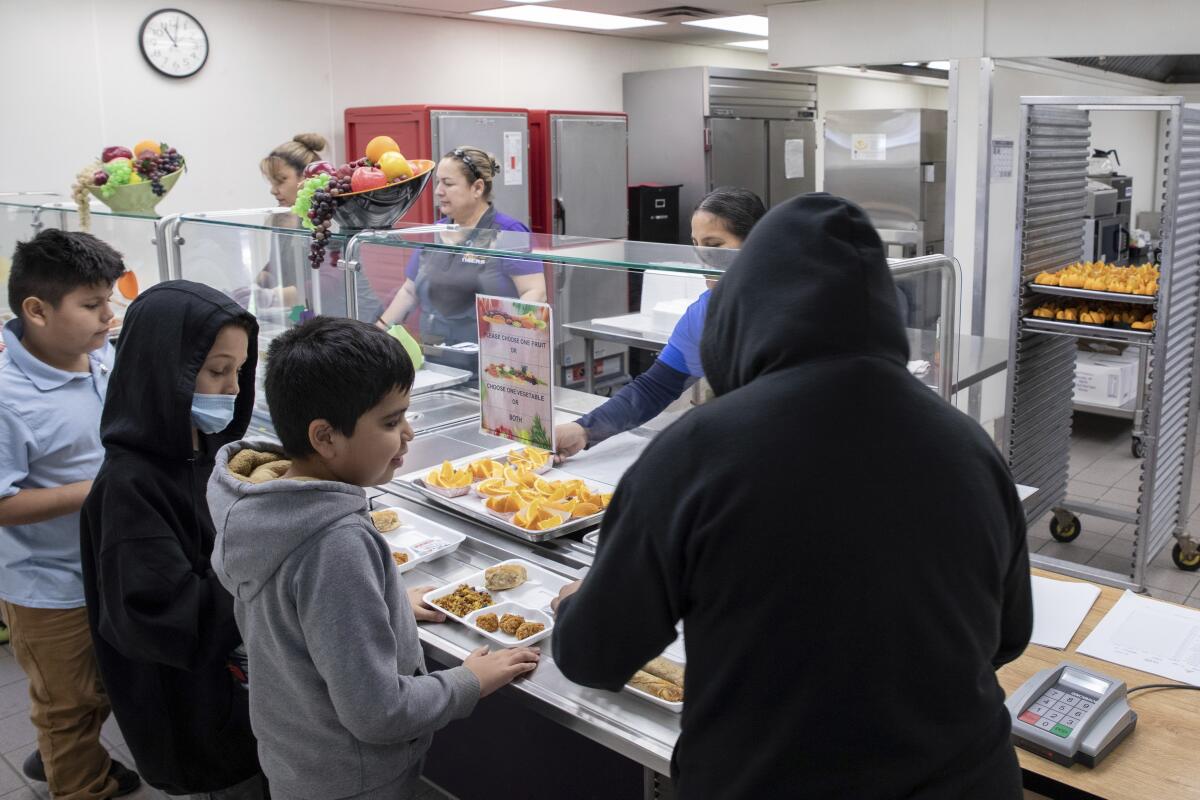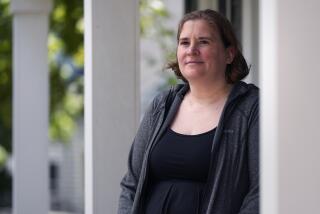‘It’s hard to focus’: Schools say American kids are hungry

- Share via
PHOENIX — America’s schools say kids are hungry — just as pandemic-era benefit programs have lapsed. There is growing concern about the effects on kids’ ability to learn.
Congress temporarily made school meals free to all American schoolkids, but since that ended last fall, the need has only seemed to grow.
Soaring food prices are adding strains on families seeing reductions in multiple kinds of financial assistance. One federal program that ends this month had given nearly 30 million Americans extra food stamps during the pandemic.
The strike plans by Local 99 of service employees and United Teachers Los Angeles come in response to what they say are stalled negotiations.
School cafeterias typically don’t turn away a hungry kid, but debts for unpaid school meals have been rising — showing the level of need, and raising questions about how schools will keep feeding everyone, without federal money to do it. The neediest kids are eligible for free or reduced-price meals, as before the pandemic, but qualifying for those benefits requires applications that haven’t been necessary for several years.
“Programs that provide direct food assistance are hugely critical and we are going to see the effects of not having them over the next couple of months,” said Megan Curran, policy director for Columbia University’s Center on Poverty and Social Policy.
In the last academic year, with nearly all schools back operating in person, the number of school meals served to students jumped dramatically, and was slightly higher than pre-pandemic levels, according to a report Thursday from the Food Research & Action Center. Already, it said, states now are reporting drops in the number of meals served.
More than 34 million people, including 9 million children, in the United States are food insecure, according to the U. S. Department of Agriculture, meaning they lack consistent access to enough food for every person in their family to be healthy.
Children in such households are more likely to struggle academically and repeat grade levels, among other challenges, according to researchers.
For fourth-grader Fabian Aguirre, it’s hard to think about math equations when he’s sitting in class with a growling stomach.
When he arrives in the morning, Fabian eats breakfast served by the school in South Phoenix, but he can get hungry in the classes before lunch. On days he doesn’t eat at home first, even the meals offered by the school aren’t enough to keep him feeling full.
“It’s hard to focus in class when I’m hungry. Food helps me pay attention to what I’m learning,” said Fabian, 10.
At his school, V. H. Lassen Academy of Science and Nutrition, all students are eligible to receive free meals. The Roosevelt School District, where 80% of students are Latino and 12% are Black, covers the meals with aid from a federal program for low-income school communities.
To reach students who might be embarrassed about not having eaten at home, the school recently changed how it distributes free breakfast. Carts filled with prepackaged breakfast meals are rolled outside by the entrance to the school, instead of being kept in the cafeteria.
“We realized that a lot of our students were going straight to the playground and not going into the cafeteria to eat before school, from the 7 a.m. to 7:15 a.m. time frame,” said Jessica Padilla, a sixth-grade math and science teacher.
While they lasted, the universal free meals addressed several concerns about student hunger. There was no paperwork involved. And kids who needed them didn’t have to worry about stigma because they were available to everyone. Some states including California are using state money to continue these programs, but most have gone back to charging all but the neediest kids for meals.
When the free meals for all came to an end, “families were left scrambling and confused,” National PTA President Anna King said. They weren’t prepared for the paperwork after two years without it — and many families with young kids had never filled them out.
It can be difficult for parents to ask for the help they need, said Jillien Meier, director of No Kid Hungry. Immigrant parents, she said, might also avoid filling out forms requesting free or reduced-price meals out of concern it could bring unwanted attention if they are in the U.S. illegally.
Teachers often are the ones to pick up on chronic hunger in students.
Martissa Moore, a teacher at Bainbridge Middle School in Bainbridge, Ga., recalls a seventh-grade student who had his head on his desk during class, picked arguments with other students and struggled to keep up academically. Moore sensed he wasn’t getting enough to eat.
Each day that year, she brought him whatever her daughter had for breakfast and slowly saw progress in his reading skills.
“You just do what you have to do for your students because you don’t want them hungry,” Moore said.
Hilary Seligman, senior medical advisor with Feeding America, said it shouldn’t be up to teachers to address child hunger.
“Because we have so much food insecurity among children, we shift that responsibility to the schools,” she said. “But normal childhood development is having access to food at home. That is part of creating for families in America a stable environment where kids are ready to learn when they arrive in school.”
More to Read
Sign up for Essential California
The most important California stories and recommendations in your inbox every morning.
You may occasionally receive promotional content from the Los Angeles Times.











